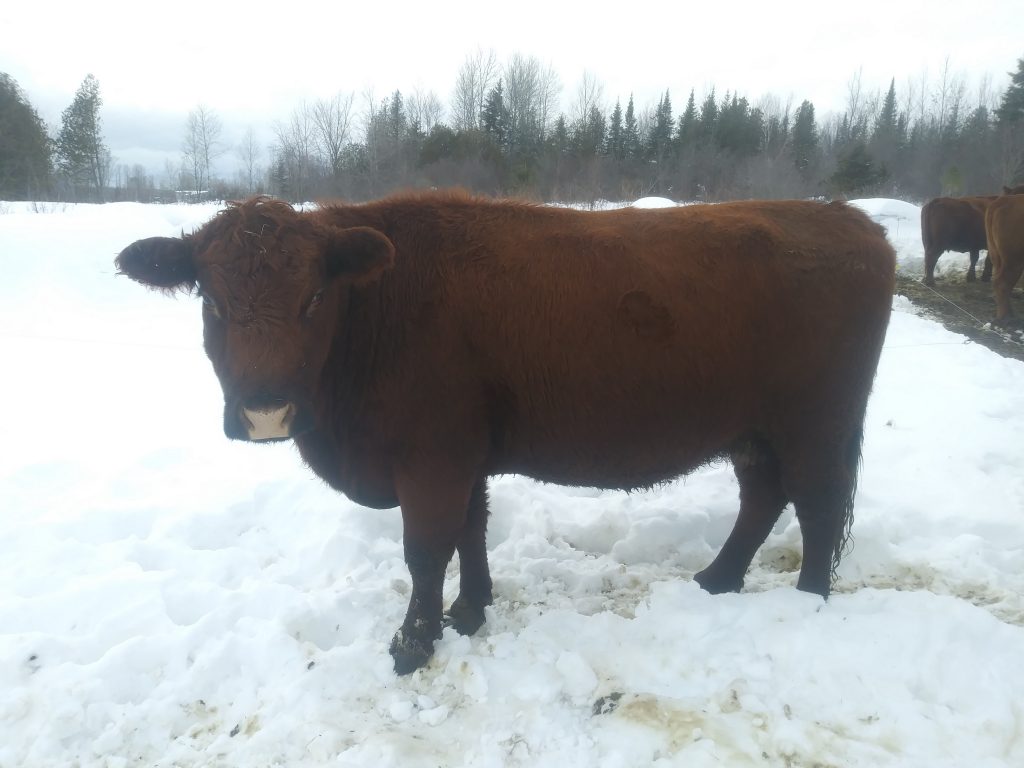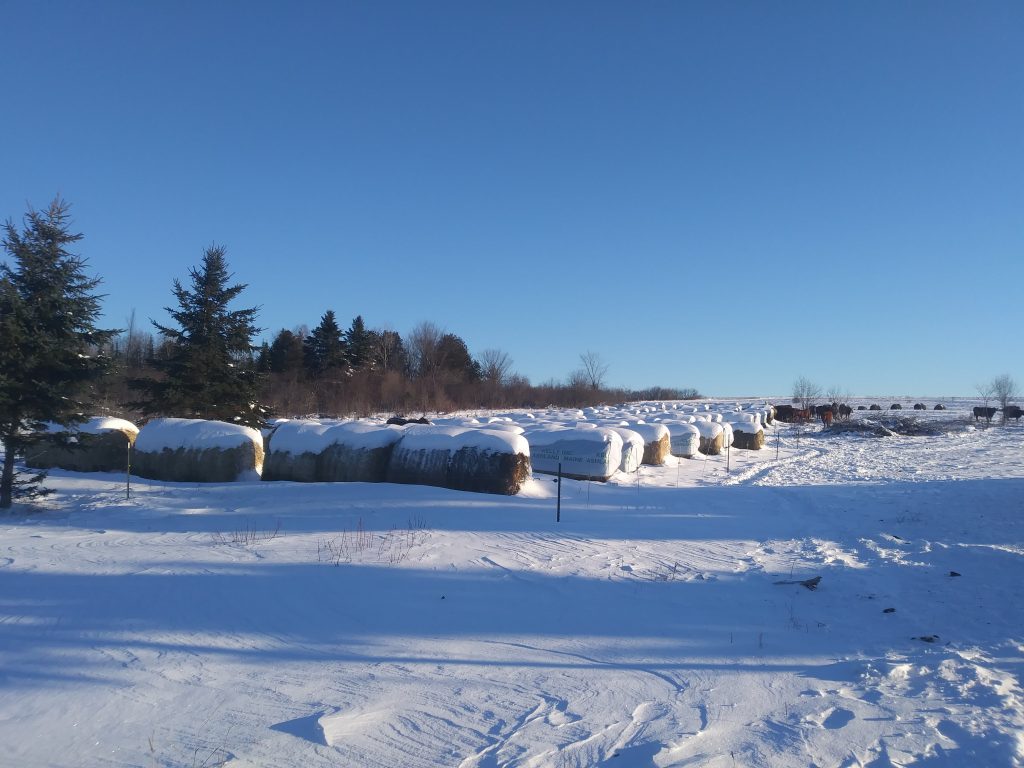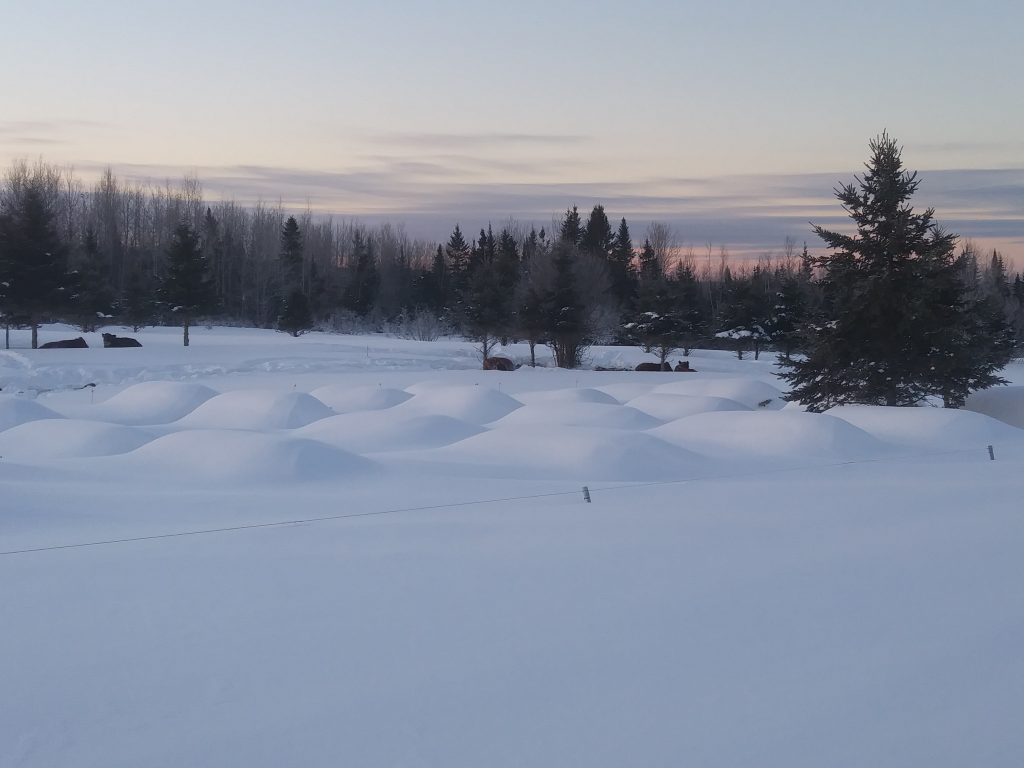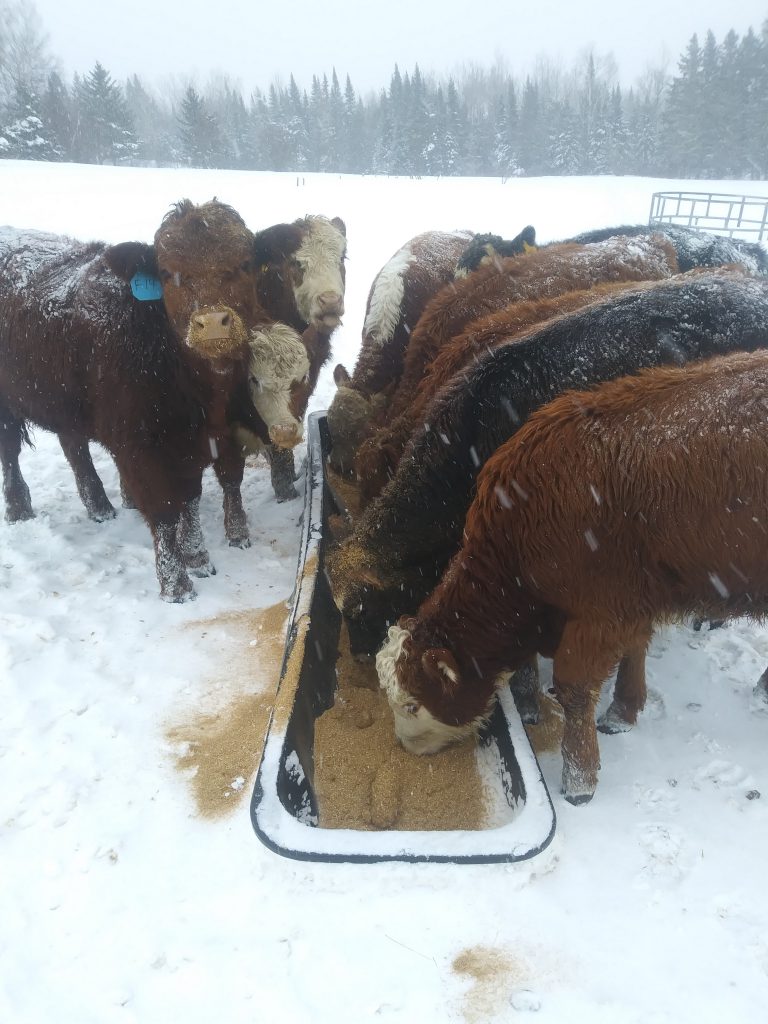
It has been a while since our last post on Cattle Starter. We are still keeping very busy with our cattle farm. We have many goals for our farm operation in 2019 and one of those goals is to keep current with our Cattle Starter blog.
When we first started Cattle Starter, we were intent on having a blog that was very heavy on beef cattle information and very light on personal and family antics/adventures/stories. Over the years, though, it has become apparent that there is no way to keep some of the personal and family out of this blog.
Obviously, our family and our cattle are intertwined, and while we still want to provide facts and information important to raising beef cattle, we also want to share our own antics, antidotes, and adventures with our little family along the way. We had a pretty scary medical situation in November and while in the end, everyone is okay, it reinforced in our minds that our family unit needs to be healthy, strong and smart in all operations – farm and personal. Maintenance for ourselves is just as importance (and more) than it is for our cattle.
With that being said, let me provide an update on our winter 2018/2019 thus far.
Snow, Cold, Wind, Ice, Snow, Cold, Wind, Ice, Snow.Cold,Wind.Ice.
Spring, are you coming soon?!?!
We live in northern Maine. Cold, snowy winters are a way of life here and nothing out of the ordinary. Winter 2018/2019, though, has taken our definition of a northern Maine winter to the extreme. Snow started here the end of October 2018 and the snow is still coming steady (storming outside as I am typing this). From that 1st snow storm to now, we have been pelted with storm after storm after storm after storm. Mixed in with the snow storms has been bitter cold, and blistering – blow-you-over-sideways – wind storms. It has been brutal – plain and simple. As soon as we clean up from one snow storm, the next one is on the horizon.
Having this kind of winter has pushed us to our limits – physically, mentally and emotionally. When he can, Jer uses the snowmobile after a snow storm to help pack down a trail for us to access the cattle. The cattle themselves have established some excellent packed-down trails in their respective pastures. But, there have been countless times where we have had to battle through deep, deep snow to reach the cattle. One of the big challenges comes with digging out frozen and snow covered round hay bales. Our bales range from 4-5 ft tall and they are all buried in the snow this winter. We still feed out our winter hay via our hay-bale grazing method. It is a constant job of digging out hay bales, cutting off frozen tarps, and hacking away at frozen hay bales with the trusty axe.


In addition, as more and more snow falls, we are constantly trying to maintain the high voltage on our wires that is needed for our hay bale grazing method to be successful. The tops of our pasture fences are all buried or very nearly in snow. In many pasture sections, we have not been able to spy the top wire of the fence line in a long while now. Luckily, cattle (as are many animals) are heavily motivated by food. Sometimes, this means they may try to break into hay bale sections that are not open yet. I suppose you could say that the silver lining of all this snow, though, is that the cattle do not want to stray far from their food source. They don’t want to trek through the waist deep (and deeper) snow anymore than we do!
We will be heading into March soon and we anticipate that it will be a good two months before our cows will be able to start grazing on pasture. The next two months will be a delicate juggling act of making sure we have enough hay and supplemental food. For our mama cows (21 currently), hay is their primary (and normally, only) diet during the winter. We supplement with mineral daily. With our situation this winter, though, we are currently looking into inquiring some supplemental feed (e.g., culled potatoes, etc) to help get us through the remainder of our winter season. I want to add here that it is important to make sure you train your cows to finish up their bales well. You could be losing hundreds and hundreds of dollars due to hay waste by not managing your herd to clean-up after each hay bale. You know what I am talking about. There is always that pile of leftover over hay that has been a little buried by snow or stomped down by the cows. It is free of poop and pee and it is still GOOD feed that needs to be eaten. I have had many afternoons where I have had to limit hay bale access to “force” the cattle to clean-up. When I say “force” I don’t mean this in a negative way. They are not being starved or mistreated but simply, being trained to finish-up “their plate of food before having their next plate of food”. Every hay bale is like a big gold nugget during the winter to us, and we can’t afford to waste any of it.
We learn lessons every winter and some lessons are hard-learned. This is our sixth winter with beef cattle and it has been lessons galore. We have some ideas for changing things up for winter 2019/2020. You can have the best plan laid-out on paper and in Excel sheets. That piece of paper can tell you how much hay to feed for how many cattle for how many days. You can make calculations in Excel until the cows come home! And everything will go according to plan and to those calculations! Plans made in the summer and fall seasons (while we sit at the table in our shorts and t-shirts, sipping lemonade…), change as quick as the winds here on our farm come winter time (while we are scrambling around with heavy snow socking in the farm 5 weeks early than normal). Mother nature does not care about our “plans” or our “goals” or even our projected end number of hay bales! ha! She comes storming in and takes us on a wintry ride for over 6 months of the year. In all seriousness, though, planning is crucial for a successful winter season. You HAVE to sit down well ahead of time and make projections for your winter feed needs. For most of us, we need to do this BEFORE the haying season starts and then you need to start making friends with every hay producer in a 60-mile radius. You have to be on top of this. You can’t wait until the last minute. We can’t stress this enough. You need to be prepared and organized or your winter will be a struggle – weather aside. For us, we always try to purchase more hay than we need. The wrench in our plan this year, was that winter came a whole month early and she came hard and fast and she hasn’t let up yet. When we sit down in a few months to make our winter 2019/2020 plan, you better believe that we will be looking to purchase the number of bales needed in case winter does a repeat on us and then, purchase even more just to be SAFE!
In addition to our 21 mama cows, we have 30 spring/summer 2018 calves that we are overwintering. A good majority of these will be sold as yearlings in July. Those not sold as yearlings will likely stay on the farm as replacement heifers. We feed our calves a little differently than our cows during the winter. We have two different operations on our cattle farm – cow-calf operation and a backgrounding operation for our calves. There are separate goals and management plans for each operation. Our calves are raised grass-fed (supplemented with loose barley malt tailings for additional protein and energy needs) and marketed and sold as such.

No culled potatoes or corn or grain for our calves. From the time our calves are born to the day they load on the trailer as yearlings, we are managing their feed type and consumption, and overall health to ensure as much weight-gain as possible. They are also free of any added hormones and antibiotics.
A FEW PIECES OF ADVICE
- Plan and prepare for enough winter feed. Look at the number and size of animals you will be overwintering and their daily feed consumption requirements. Once you have that information, then calculate how many bales or feed you will need. You will need to have an approximate idea of the size and weight of the bales to get the most accurate calculation. Example, a 4×4 round bale will yield less pounds of hay than a 5×5 round bale. A square bale will yield considerably less pounds of hay versus a round bale. As finances allow, purchase extra hay as a safe-guard in case you have to start feeding out hay earlier than normal. There will always be a use for extra bales come the end of winter.
- Cull animals before winter comes. It is always a good idea to take a good inventory of your herd throughout the summer and fall. Some culling decisions may be made for you (open cow, etc.) but for the most part, you need to take a hard look at what direction you want your herd to take. You may find that you have an animal or two or more that no longer fit into your farm model and it may be time for them to head down the road. No need to be feeding animals over the winter that no longer serve a purpose for your farm. Each farm has their own model and their own goals. Operate your farm to meet your farm’s individual goals.
- Communicate with your farm partner(s). As we always stress, communication is key for a successful farm operation. For our family operation, it is me, Jer and our young boys. Jer and I are husband and wife but we are also business partners. This farm is a business. It is not a hobby. It needs to be treated with the same respect and seriousness as all businesses and partnerships. Talk often and make sure all partners are on the same plan. Learn from each other. My husband and I each have our own strengths and weaknesses. For me, I am always trying to learn how to tackle and handle farm problems that for my husband are a cinch. One day this winter, I was so frustrated with all of the snow and ice and the calves breaking into hay sites that were not open yet, and I just wanted to give-up. I wanted an easy fix and the reality was that there was no easy fix. I had to button-down and fix the problem the right way and 3 hours later I did. It took me probably 3 times the amount it would have taken Jer but I learned some important lessons. I did call him for some advice and during the course of our conversations, I admittedly got very defensive that he was criticizing my methods. I was cold and tired and felt like nothing I was doing was good enough. It was a disheartening morning. But, during those 3 hours, I also worked through some emotions and thoughts. At the end, when back at the house, Jer and I had a good talk and I felt more confident about my abilities. My husband is my biggest supporter as I am his. I am very lucky to have the husband and farm partner that I have and I am sure he feels the same way! 🙂
In closing, I know that winter has hit hard across the whole country this winter. Best wishes for a safe rest of the winter!
Leave a Reply